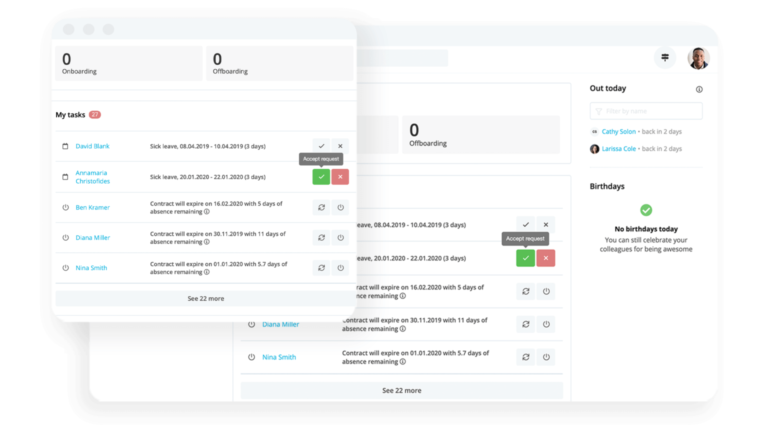Direct Earnings Attachment: Definition, Calculation & FAQs
When someone owes money to the Department of Work and Pensions (DWP), they can recover it directly from the person’s wages by issuing a Direct Earnings Attachment (DEA). If you receive a DEA for one of your employees, you have to deduct money from their earnings and send it to the DWP.
In this article, we’ll discuss everything employers need to know about DEAs, including your responsibilities when you receive one, how to calculate deductions and the answers to some FAQs.
Ensure all of your employees are safe and sound with this one checklist.Contents
- 1What Is a Direct Earnings Attachment (DEA)?
- 2What Responsibilities Do Employers Have In Case of a Direct Earnings Attachment?
- 3How are DEA Payments Calculated?
- 4What Counts As Earnings for a Direct Earnings Attachment?
- 5What If An Employee Has Another Arrestment On Their Earnings?
- 6Direct Earnings Attachment: Example
- 7Frequently Asked Questions About Direct Earnings Attachments
- 8Simplify Payroll (and More) With Personio
What Is a Direct Earnings Attachment (DEA)?
A Direct Earnings Attachment (DEA) is a process used by the Department of Work and Pensions to recover debt amassed from benefit overpayments. DWP Debt Management, which is part of the DWP, can issue a DEA notice when:
Someone owes the DWP money
They’re not currently receiving a benefit
They haven’t voluntarily agreed to pay the money back
In these circumstances, the DWP can ask the person’s employer to take the money owed directly from their wages.
Local Authorities can also issue Direct Earnings Attachments in the same way if someone has received an overpayment of Housing Benefit. This article will mostly focus on DEAs issued by the DWP, although the principle is the same. Neither the DWP nor Local Authorities need a court order to issue a DEA, which makes them different from other types of deduction orders.
If you receive a notice to implement a DEA, you have to deduct money from your employee’s salary, and send it to the DWP. There are strict rules to follow concerning the amount you should deduct based on how much the employee earns.
What Responsibilities Do Employers Have In Case of a Direct Earnings Attachment?
If you receive a notice to implement a Direct Earnings Attachment, you must:
Calculate how much you need to deduct from the employee’s net earnings (we’ll explain how below)
Make the first deductions from the employee’s paycheck within 22 days (this is normally their next paycheck)
Pay the amount deducted to the DWP by the 19th of the month following the month when you made the deduction
Ensure you include the employee’s National Insurance (NI) number in your payment reference and in any correspondence with the DWP
Keep a record of any deductions made, including the name of the employees in question and the amounts deducted from their earnings
You must also notify your employee in writing that you’re going to deduct money from their salary. You need to tell them how much you’ll deduct from their earnings, and how you calculated this figure. You should also include this information on the employee’s payslip.
How are DEA Payments Calculated?
The DWP can apply one of two rates to a DEA: the Standard Rate or the Higher Rate. The correspondence you receive asking you to set up the DEA will confirm which rate you should apply.
How much you should deduct from your employee’s earnings depends on how much they earn. You can see the deductions you should make for a Standard Rate or Higher Rate DEA below.
Daily Earnings | Weekly Earnings | Monthly Earnings | Deduction rate to apply to net earnings (Standard Rate) | Deduction rate to apply to net earnings (Higher Rate) |
Up to £15 | Up to £100 | Up to £430 | Nil | 5% |
Between £15.01 and £23 | Between £100.01 and £160 | Between £430.01 and £690 | 3% | 6% |
Between £23.01 and £32 | Between £160.01 and £220 | Between £690.01 and £950 | 5% | 10% |
Between £32.01 and £39 | Between £220.01 and £270 | Between £950.01 and £1160 | 7% | 14% |
Between £39.01 and £54 | Between £270.01 and £375 | Between £1160.01 and £1615 | 11% | 22% |
Between £54.01 and £75 | Between £375.01 and £520 | Between £1615.01 and £2240 | 15% | 30% |
£75.01 or more | £520.01 or more | £2240.01 or more | 20% | 40% |
15,000 organisations trust Personio for this reason

Just like LUSH and Premier Inn, trust Personio's all-in-one HRIS to upgrade your people operations for now and into the future. Click below to learn more about us.
Book Your DemoWhat Are Net Earnings?
When you calculate deductions for a DEA, you should make these calculations based on the employee’s net earnings. This is their gross (total) earnings, after Income Tax, National Insurance and superannuation contributions have been deducted. Normally, this is the amount of money they actually take home each payday.
What Are Protected Earnings?
Employers can only deduct up to a certain proportion of an employee’s pay through a DEA. The employee should always be left with at least 60% of their net earnings. This is called their Protected Earnings. This becomes important when employees have several different arrestments on their earnings at the same time. We’ll discuss what to do in these circumstances further on.
Administrative Fees
You can charge your employees up to £1 to cover your administrative costs for each pay period when a DEA applies. You can take this even if it means the employee won’t receive their full Protected Earnings.
Fixed-Rate Deductions
In certain circumstances, the DWP might ask you to take a fixed-rate deduction instead of calculating how much to deduct based on the table above. In this case, you still have to make sure the employee is left with at least their Protected Earnings.
What Counts As Earnings for a Direct Earnings Attachment?
Not all types of income count as earnings for a Direct Earnings Attachment. Only the following things count:
Wages
Salary
Fees
Bonuses
Commission
Overtime pay
Occupational pensions, if paid with wages or salary
Compensation payments
Statutory Sick Pay (SSP)
Payment in lieu of notice
Other types of income, such as statutory maternity pay and statutory adoption pay do not count as earnings, and you can’t make deductions from them. You can find a full list of what does and doesn’t count on the HMRC website.
What If An Employee Has Another Arrestment On Their Earnings?
There are other orders that can be placed on an employee’s earnings. For example, the Child Maintenance Service (CMS) can make a deduction of earnings order to enforce child maintenance payments. When an employee has more than one arrestment order on their earnings, there are strict rules that tell you which order you should prioritise.
You still need to make sure your employee receives their Protected Earnings, even if this means you can’t make any deductions for the DEA. We’ll look at this more closely in an example below.
Direct Earnings Attachment: Example
Let’s imagine you receive a notice to implement a Direct Earnings Attachment for one of your employees. The employee’s net earnings total £1,600 per month, which means you should deduct 15%, or £240.
However, the employee already has other attachment orders on their earnings, which take priority over the DEA and come to a total of £500. This means that deducting an additional £240 would take their earnings under the required 60% Protected Earnings. In this case, the maximum you could deduct for the DEA would be £140.
Frequently Asked Questions About Direct Earnings Attachments
Still have questions about DEAs? Here are the answers to some FAQs to help you understand how this process works.
Why Are Direct Earnings Attachments Needed?
Direct Earnings Attachments help the DWP to recover debt by taking it directly from the earnings of the person who owes them money. The system is designed so that the person only pays back a set percentage based on their income. A certain portion of their income is always protected.
How Are Deductions Calculated Under a Direct Earnings Attachment?
Deductions under a DEA are calculated according to a list of rates set by the DWP. If you have to implement a DEA on an employee’s wages, consult the HMRC website or the table above. This will tell you the percentage of the employee’s net earnings that you have to deduct.
How Long Does a DEA Last?
A DEA usually continues until the full amount has been recovered, the employee stops working for you, or the DWP tells you to stop making deductions.
What If an Employee Thinks Their DEA Payments Are Wrong?
If an employee tells you they think the amount you’ve deducted is wrong, first check that you are deducting the correct amount. If your deductions are correct, you can tell the employee to contact DWP Debt Management. They should be able to find the right phone number on the letter they received to inform them about the DEA.
What If the Person Doesn’t Work for Me Any More?
If you receive a DEA notice for an employee who no longer works for you, you need to inform DWP Debt Management. You can do this either in writing or by phone, but you should tell them within 10 days of receiving the notice.
Simplify Payroll (and More) With Personio
Personio’s secure integration with DATEV lets you submit payroll information quickly and easily, so your accountants get easy access to the information they need.
And that’s not all Personio can do… our software simplifies everything from recruitment to performance management to internal workflows — and plenty more. This gives HR teams back the time they need to focus on people, not repetitive processes.
Book your demo today, or jump straight into a free trial.
